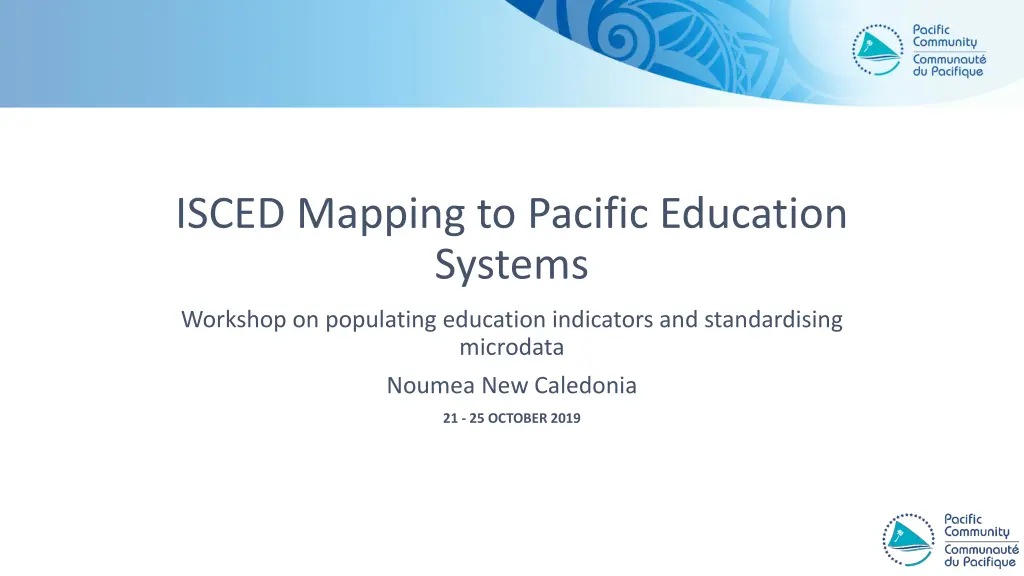
Understanding ISCED Mapping and Education Systems Workshop in the Pacific
Explore the ISCED mapping of Pacific education systems, essential for cross-national education statistics comparability. Learn about ISCED levels of education, qualification frameworks, and mapping of Pacific qualifications. Discover how the ISCED mapping and validation process impact countries in the Pacific region.
Download Presentation

Please find below an Image/Link to download the presentation.
The content on the website is provided AS IS for your information and personal use only. It may not be sold, licensed, or shared on other websites without obtaining consent from the author. If you encounter any issues during the download, it is possible that the publisher has removed the file from their server.
You are allowed to download the files provided on this website for personal or commercial use, subject to the condition that they are used lawfully. All files are the property of their respective owners.
The content on the website is provided AS IS for your information and personal use only. It may not be sold, licensed, or shared on other websites without obtaining consent from the author.
E N D
Presentation Transcript
ISCED Mapping to Pacific Education Systems Workshop on populating education indicators and standardising microdata Noumea New Caledonia 21 - 25 OCTOBER 2019
ISCED Mapping classify national education systems according to the International Standard Classification of Education (ISCED). essential tools for organizing information on national education systems. ensure cross-national comparability of education statistics and indicators and assists in the interpretation of them. ensure a transparent process of coding national education programmes into comparable categories for use in international statistics. provide clear guidelines on how to report national education data for international purposes. provides a statistical framework to classify diverse education systems in such a way that they can be compared across countries.
ISCED Levels of Education Pre-Schools / Kindergartens 0 Early Childhood Education 1 Primary Education 2 Lower Secondary Education 3 Upper Secondary Education 4 Post School non-Tertiary Education 5 Short cycle Tertiary Education 6 Bachelor Degrees + Post Grad Certs/Dips 7 Master Degrees 8 Doctorates Schools TVET Providers University
Qualification Frameworks National and regional qualification frameworks can be useful tools for categorising knowledge, skills and competencies related to programmes and qualifications. National qualification frameworks exist in many countries to describe competencies and skill levels for the population in the sense of educational achievement. It is recommended that countries make the links transparent between ISCED and their national or regional qualification framework.
ISCED Mapping of Pacific Qualifications Framework ISCED 8: Doctorates ISCED 7: Master Degrees (& equivalent) ISCED 6: Bachelor Degrees (& equivalent) ISCED 6: Bachelor Degrees (& equivalent) ISCED 5: Short-cycle Tertiary Education ISCED 4: Post-Secondary non-Tertiary Education ISCED 3: Post-Secondary non-Tertiary Education
ISCED Mapping PIC Validation Cook Islands Fiji Kiribati Marshall Islands Micronesia Nauru Niue Palau Papua New Guinea Samoa Solomon Islands Tonga Tokelau Tuvalu Vanuatu
ISCED Mapping to National Education Systems ISCED 3 Digit Codes 1 digit = Level (0-8) 2 digit = Orientation (General, Vocational) 3 digit = Access to higher education
